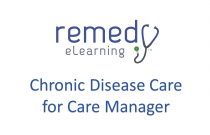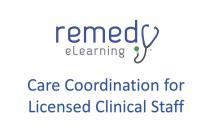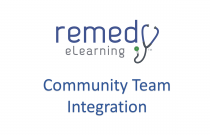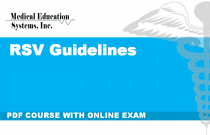Roots of Cancer Disparities
Sanya A. Springfield
8.00 Hours
This course describes efforts to enhance the understanding of the biological and nonbiological causes of cancer health disparities, increase the diversity of the cancer research workforce and reduce the unequal burden of cancer in the United States.
Breastfeeding Support and Promotion
Industry Specialists
8.00 Hours
This intermediate level continuing education course describes how supporting mothers and babies who are breastfeeding will increase the public health impact of everyone’s efforts, reduce inequities in the quality of health care that mothers and babies receive, and improve the support that families receive in employment and commu....
Breastfeeding Basics: Benefits, Support, Tips, and Concerns
Donna Blum-Kemelor, MS, RD, LD
0.25 Hours
Breastfeeding helps to establish a secure and loving relationship between the mother and her infant and offers many other positive benefits. This CEU course provides information on the benefits of breastfeeding, factors affecting the decision to initiate or continue breastfeeding, methods to support breastfeeding mothers, pract....
Bullying Prevention and Response
Industry Specialists
1.00 Hours
Bullying is unwanted, aggressive behavior among school aged children that involves a real or perceived power imbalance. This short CEU course provides best practices in preventing and responding to bullying.
Environmental Design for People with Dementia Nearing End of Life
Richard Fleming
1.00 Hours
The design of environments in which people with dementia live should be understandable, reinforce personal identity, and maintain their ability. This CEU course explores the view of people with dementia, family carers, and professionals on what aspects of the physical environment would be important to support good quality of li....
Breastfeeding - Essentials of Positioning
Jane Bradshaw RN, BS, IBCLC
This course looks at the history of infant formula, the worldwide decline of breastfeeding including the cultural trends and the international as well as U.S. organizations which are active in supporting breastfeeding.
Respiratory Diseases
Medical Education Systems, Inc.
25.00 Hours
Chronic respiratory disease has emerged as a major nationwide health problem. Chronic obstructive pulmonary diseases have increased to epidemic proportions and are currently significant causes of morbidity and mortality in this country. These conditions have revolutionized the practice of pulmonary medicine and have prom....
Asthma in the Elderly
Medical Education Systems, Inc.
6.00 Hours
Asthma is a common disease in the general population, with an overall prevalence in the US in 2002 of 7% reported by the National Center for Health Statistics. 1 It is caused by a complex interaction of inflammatory cells, mediators, and cytokines, which can induce bronchoconstriction and, as a result, airflow obstruction. 2....
Asthma Today: Definition/Diagnosis/Causes
Medical Education Systems, Inc.
20.00 Hours
The information in this Continuing Education Unit is intended to aid health care professionals in diagnosing and managing patients with asthma. Much of the information is adopted from the National Asthma Education and Prevention Program Expert Panel Report II: Guidelines for the Diagnosis and Management of Asthma. The recomme....
Circadian Rhythm: An Overview
Medical Education Systems, Inc.
5.00 Hours
Circadian rhythm (diurnal rhythm) any 24-hour periodicity in the behavior or physiology of animals or plants. Examples are the sleep/activity cycle in many animals and the growth movements of plants. Circadian rhythms are generally controlled by biological clocks .
Pulmonary function testing
Medical Education Systems, Inc.
8.00 Hours
Pulmonary function testing has come into widespread use since the 1970s. This has been facilitated by several developments. 1,2 Because of miniaturization and advances in computer technology, microprocessor devices have become portable and automated with fewer moving parts. Testing equipment, patient maneuvers, and testing techn....
Respiratory Examination and Treatment
Medical Education Systems, Inc.
30.00 Hours
Pulmonary function testing is one of the basic tools for evaluating a patient's respiratory status. In patients with suspected pulmonary disease, it is often the first diagnostic test employed in the work up. Pulmonary function tests (PFT's) are also used for pre-operative evaluation, managing patients with known pulmonary disea....
Chronic Disease Care for Care Manager
Sheila Richmeier, MS, RN, FACMPE
1.00 Hours
This course demonstrates the value of using team based care for chronic disease. Information presented will explain steps to operationalize supplemental one-on-one chronic disease care, and will outline ways to assist patients in self-management through patient engagement and patient activation.
Cancer for Licensed Clinical Staff
Sheila Richmeier, MS, RN, FACMPE
1.00 Hours
This course develops the knowledge and skills needed to recognize the signs and symptoms of cancer, understand the disease process and recognize the risk factors of the disease. The content will introduce testing and medications used for diagnosing and treating cancer and will explore the actions that care teams and patients can....
Care Coordination for Licensed Clinical Staff
Sheila Richmeier, MS, RN, FACMPE
1.00 Hours
This course explores patient needs for care coordination and the roles of primary care and specialty care. You will gain an understanding on prioritizing patient referrals and the necessary information that should accompany a referral.
Community Team Integration
Sheila Richmeier, MS, RN, FACMPE
0.25 Hours
This course explores the roles of the Community Health Worker and Community Pharmacist as member of the patient centered care team and in the community setting as a partner in team based care. You will gain an understanding of ways to promote the use of Community Health Workers and Community Pharmacists in educating and helping....
RSV Guidelines
Medical Education Systems, Inc.
20.00 Hours
Bronchiolitis is a disorder most commonly caused in infants by viral lower respiratory tract infection. It is the most common lower respiratory infection in this age group. It is characterized by acute inflammation, edema, and necrosis of epithelial cells lining small airways, increased mucus production, and bronchospasm.
Alcohol Screening and Brief Intervention for Youth
Industry Specialist
4.00 Hours
This guide will help you conduct fast, effective alcohol screens and interventions with your patients, even during brief, acute care visits. The tools, tips, and resources are designed to help you surmount common obstacles to youth alcohol screening in primary care. Typical barriers include insufficient time, unfamiliarity with....
Religion, Spirituality and Trauma
Industry Specialist
1.00 Hours
Extracted from a guide created by the National Center on Trauma-Informed Care as a technical assistance document to help make trauma-informed peer support available to women who receive or have received services in behavioral health or other human service systems. This course provides information, tools, and resources to hel....
Case Management (Revised)
Substance Abuse and Mental Health Services Administration
2.00 Hours
The goal of interagency case management is to connect agencies to one another to provide additional services to clients. This CEU course prepares program workers about getting involved in these efforts by presenting findings from previous evaluation efforts and then proposing a framework for facilitating quality improvement and....
Cultural Competence - Serving Diverse Children and Families in Social Services Agencies
Office of Planning, Research, and Evaluation, Administration for Children and Families,
1.00 Hours
Failure to properly address cultural differences creates and maintains mistrust and other potential conflicts between service providers and potential clients, further contributing to low quality of care and poor health outcomes. Thus, delivering culturally competent services remains a goal and a highly promising approach to pro....
Administrators - People with Physical and Cognitive Disabilities
Industry Specialist
1.00 Hours
This course addresses the following aspects with regard to substance use disorder treatment for people with physical and cognitive disabilities: the Americans with Disabilities Act; attitudinal barriers; discriminatory policies, practices, and procedures; communication barriers; architectural barriers; and funding consideration.....
Behavioral Health Issues Among Afghanistan and Iraq U.S. War Veterans
Industry Specialist
1.00 Hours
This CE course introduces some of the problems facing Operation Enduring Freedom and Operation Iraqi Freedom veterans and can help healthcare and social service professionals understand these veterans’ needs. Topics relating to returning OEF and OIF veterans will look at: behavioral health issues; substance abuse; mental disord....
Prevention of Child Abuse and Exploitation
Industry Specialist
1.00 Hours
This CEU course: defines the nature and scope of child sexual abuse and exploitation; acknowledges the need to build on the foundation of existing research, advocacy, and treatment; discusses the value of a National Plan; encourages the development of prevention-focused policy; and describes a range of actions that includes indi....






